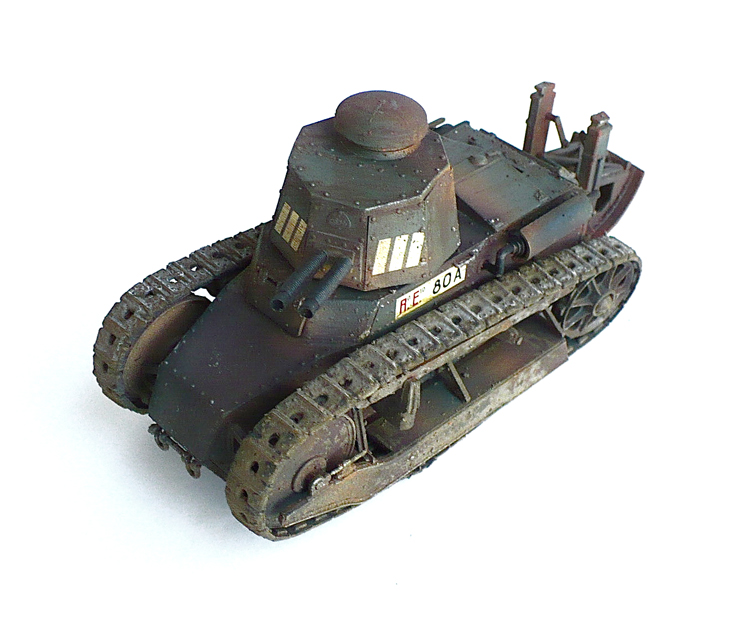The Fiat 3000, whose design was based on that of the French Renault FT-17, was the first tank to be produced in series in Italy. It was to be the standard tank of the emerging Italian armored units in World War I.
Although
1400 units were ordered, with deliveries to begin in May 1919, the end
of the war caused the original order to be cancelled and only 100 were
delivered. The first Fiat 3000s entered service in 1921 and were
officially designated as the carro d'assalto Fiat 3000, Mod. 21.
(Fiat 3000 assault tank, Model 21). Tests of the Model 21 revealed
that the armament, consisting of two 6.5mm machine guns, was
inadequate, and adoption of a 37mm gun as main armament was urged.
The
up-gunned version of the 3000, armed with a 37/40 gun, was tested in
1929 and was officially adopted in 1930 with the designation of carro d'assalto
Fiat 3000, Mod. 30. The Model 30, in addition to its improved
armament, also differed from the Model 21 in that it had an improved
engine developing more power, its suspension was improved, the engine
compartment had a different silhouette, and external stores were stowed
differently. Some Model 30s were also produced with two 6.5mm machine
guns as main armament, as on the Model 21, in lieu of the 37mm gun. A
limited number of Model 21 vehicles were exported to Albania, Latvia and Abyssinia (Ethiopia) prior to 1930.
The designations of these tanks were changed prior to the outbreak of World War II,
in accordance with the identification system that was adopted
throughout the war by the Italians. The Model 21 was redesignated the
L.5/21, and the Model 30 was redesignated the L.5/30.The Fiat 3000
(Model 21) was first used in action in February 1926 in Libya,
and subsequently also saw action against the Ethiopians in 1935. The
Italians did not employ any of these tanks in Spain during the Spanish Civil War,
however. With Italy's entry into World War II in June 1940, a limited
number of Fiat 3000s still in service with the Italian Army were
employed operationally on the Greek-Albanian front. They were also among
the last Italian tanks to oppose the Allies, as in July 1943, when the
Allies landed in Sicily,
two Italian tank companies on the island were still equipped with the
3000. One company was dug in and their vehicles were used as fixed fortifications, while the other company was used in a mobile role, with few of the tanks surviving the Allied drive.





2 comments:
Nice detailed looking model, being a Fiat i am sure it was reliable....haha Personally i think i would have taken my chances on the ground.
Yeah they weren't much.
Post a Comment